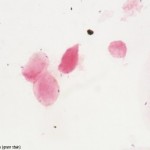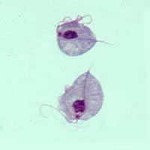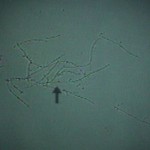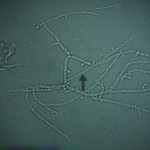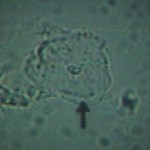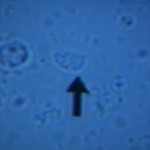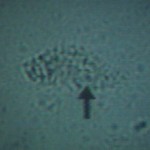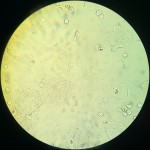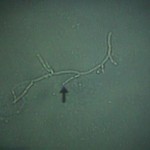In skilled hands, a wet mount of vaginal secretions is a rapid and reliable method of determining the cause of a vaginal discharge.
The technique is easy to teach in group settings, and easier if you have some training materials.
In this training module, we begin with a 5 minute video that outlines the concepts and basic methods of the KOH and saline wet preps. The video format is useful because it consistently covers the important issues, and never gets tired of presenting the same material.
The video format is also useful because it shows in real time the active motion of the trichomonads, and has the ability to focus up and down through the plane of the slide, making identification of yeast and clue cells easier. This mimics the images seen during an actual wet mount procedure.
During the presentation, I often will include other video clips that may have different presentations or magnifications of important wet mount findings.
I have each student prepare a wet mount, using glass slides and a “discharge” made from corn starch mixed with a little bit of water. Ideally, we would have fresh vaginal discharge, but timing and availability rarely work out. Further, by avoiding actual biologic material, disposal and handling of the material is not so problematic.
For the KOH and normal saline solutions, we have small bottles with eye droppers made up and labeled “KOH” and “NS”. They contain only tap water, to provide protection agains spills and shelf life issues.
Having completed the glass slide preparations, we move back to the screen. I past sessions, I’ve tried to have each student practice with the microscope, focusing up and down through the plane of the slide, but this proved to be too time-consuming and resource expensive (not easy to obtain enough microscopes all in one place for the students to each have access to one.)
As a group, we review various wet mount images and video clips (without identifying audio), to give the students an opportunity to make their own diagnosis. I’ve posted below some of the resources we’ve used.


